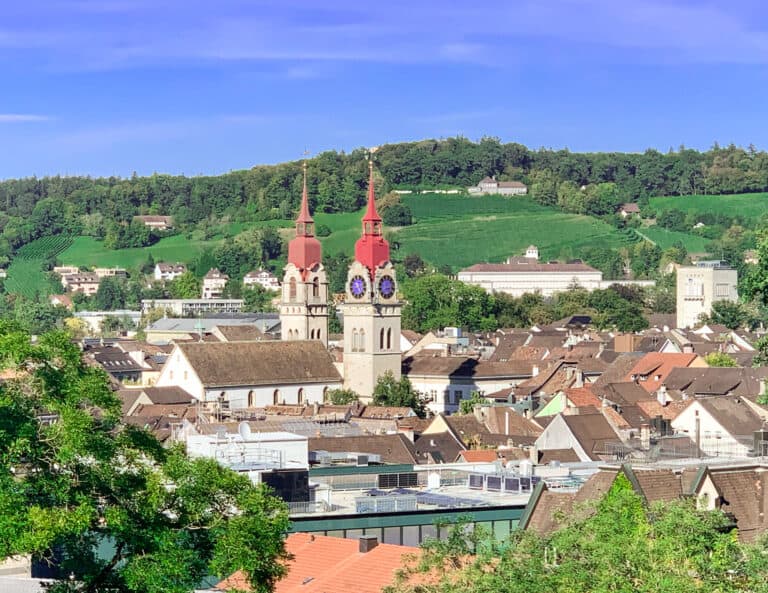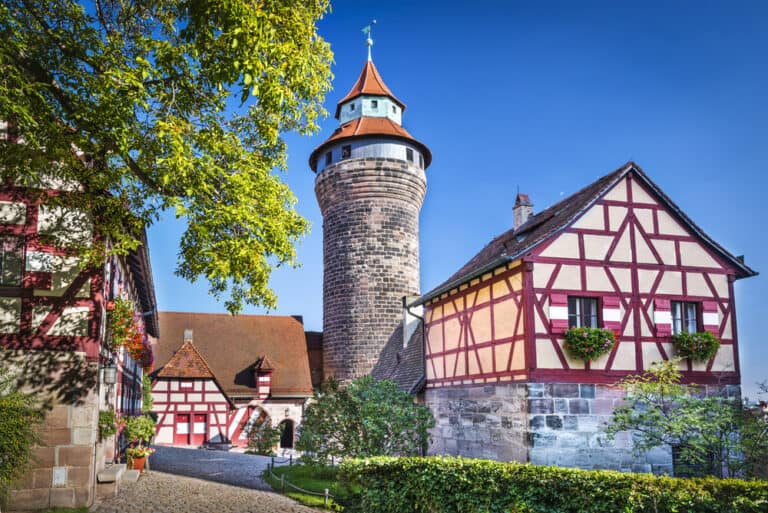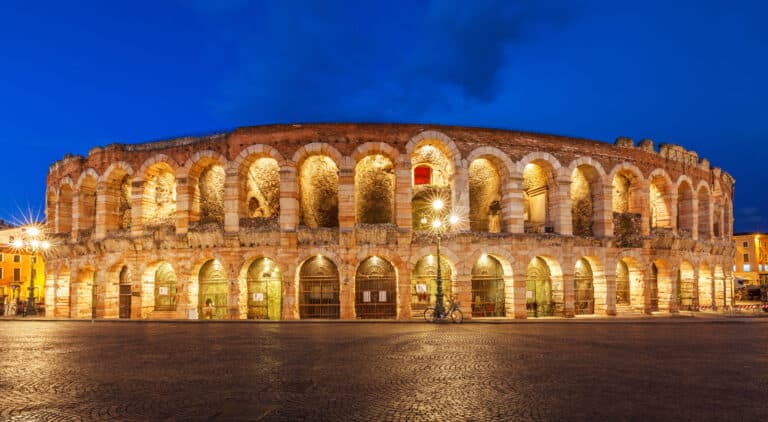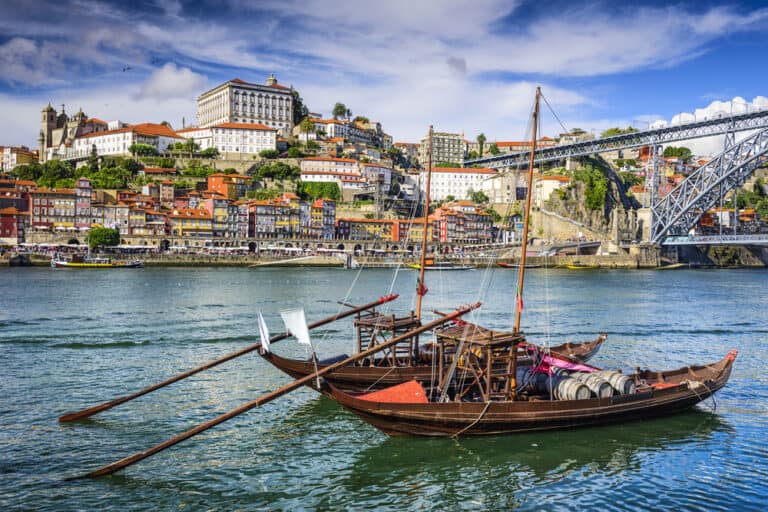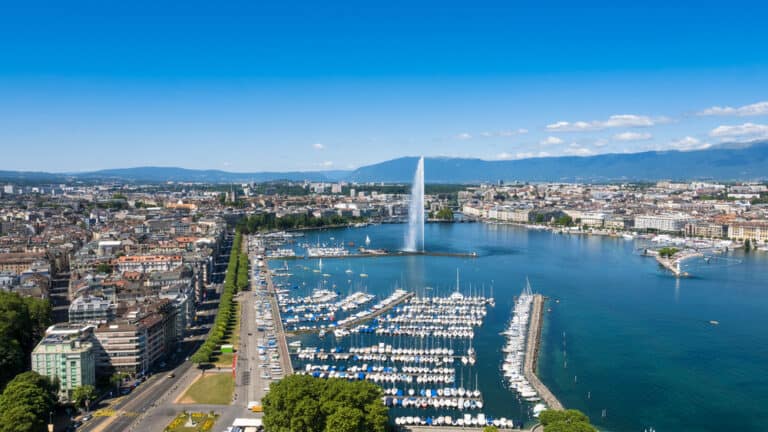Belgium: the 24 top things to do in Mechelen
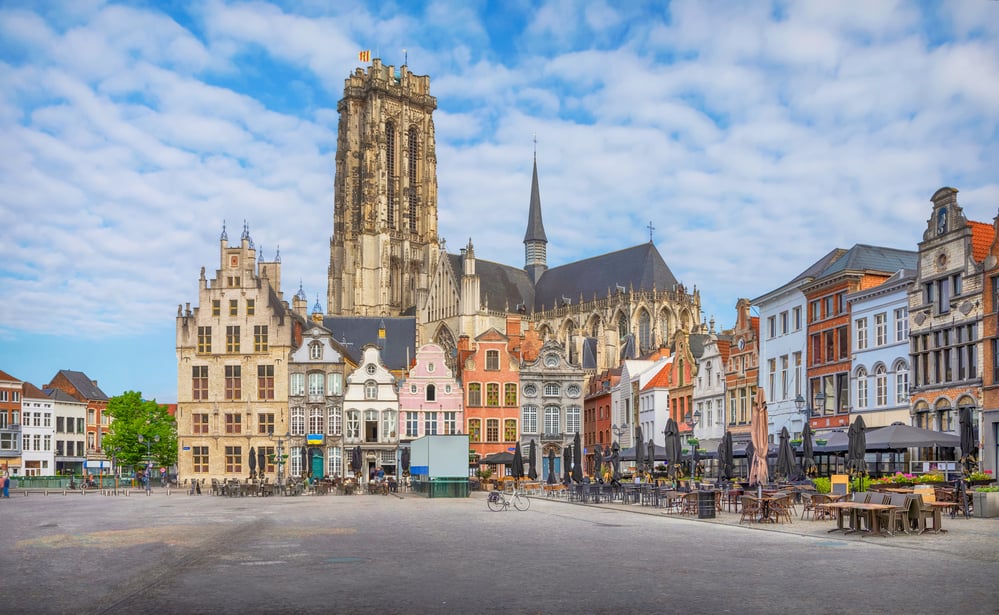
Only 20 minutes by fast train from Brussels in Belgium, Mechelen is a very walkable city with many central attractions that can be easily seen in a day. There’s definitely plenty of things to do in Mechelen on a short break.
It is a city steeped in history. In fact, when Archduchess Margaret of Austria was regent of the Habsburg Netherlands in the early 1500s, Mechelen became the capital of the Low Countries (present-day Belgium, the Netherlands, and Luxembourg).
Some of the city’s illustrious past sadly is no more. Mechelen once featured twelve gates in the city walls that guarded the entrance to its medieval centre. Only one – the twin-towered Brusselpoort – remains.
Having said this, much of its historical splendour survives, and you won’t be lost for finding things to do.
In all, there are apparently 300 listed monuments, with the top attraction being the majestic St Rumbold’s Cathedral and its imposing 15th century church belfry (St Rumbold’s Tower). As its name implies, the belfry literally ‘towers’ over the historic centre.
This fascinating city also sports a fabulous sweeping central square lined with beautiful Flemish buildings on all sides, a number of UNESCO World Heritage sites, and some notable architectural landmarks.
So, although the city is often overlooked as a destination for a short break when set against the likes of Brussels, Antwerp, and Bruges, it’s an excellent place for a day trip or short break.
This post contains affiliate links
Where is Mechelen?
Mechelen sits on the railway line between Belgium’s two largest cities – Brussels and Antwerp – and is located to the northeast of the nation’s capital. It can be reached from Brussels in around 20 minutes by fast train.
You can also catch the train from the airport, which takes about 11 minutes on the fast train.
Mechelen is well connected to other Belgian destinations such as Antwerp, Bruges, Leuven, and Liege. This makes it an excellent place to combine with visits to other Belgian cities.
Why visit Mechelen?
First, Mechelen is straightforward to get to from Brussels and Antwerp, making it an ideal place for a day trip. Although some attractions are a little way out of Mechelen’s historical centre, it is a small city, so it’s very easy to see many of the main central sights in a day or a short break.
Mechelen also has some beautiful places and historic sights to visit.
It is the home of arguably Belgium’s most important cathedral, St Rumbold’s, and one of Mechelen’s many highlights is the unparalleled views you are afforded of the entire city (and beyond) from the tower’s summit.
Named, appropriately, ‘The Skywalk’, you can even see as far as Antwerp and Brussels!
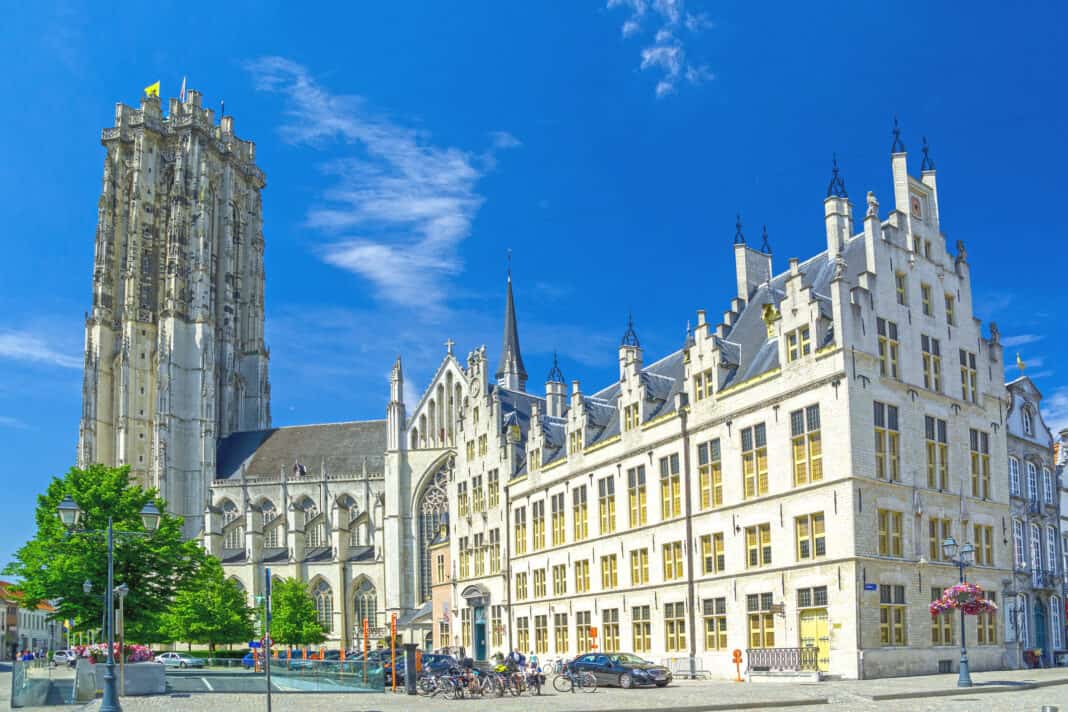
In addition – and like nearby Leuven – Mechelen is home to two Beguinages (or Begijnhofs).
These self-sufficient housing communities were apparently quite common in the Flanders region during the Renaissance period. They were built to house soldiers’ widows who didn’t go into the convents and who ran all of the shops and services themselves.
The well-preserved historic housing developments are still in use. Brimming with character, they are wonderful to explore with their often narrow cobbled streets, period street lights, and attractive-looking houses.
Beer lovers may also like to know that Mechelen is notable for Het Anker. The city is the site of the brewery which is the architect of some great beers, including the Gouden Carolus range.
How to get to Mechelen
Via the airport
Brussels Airport is the closest airport and at only about 15 km away, it makes the city an easy destination for visitors.
You can reach Mechelen by train from Brussels Airport in 11 minutes. Go to level 1 at the airport, and a direct express train will take you straight here.
Note that there are two train stations in Mechelen: Central Station and Nekkerspoel Station.
The latter station is nearer the main square, but if you are coming from the airport, you need to go to Central Station. It’s then about a 15 to 20 minute walk from here to the main square.
However, if you do arrive at Central Station and don’t want to walk into the centre, you can pick up the Line 1 bus outside. This drops you at the bus station to the east of the main square and just by the Palace of Margaret of York.
You can also take a bus from the airport station on level 0. Direct buses leave twice an hour, and you have several bus lines to choose from.
Although the journey is cheaper, it takes longer – about 45 to 50 minutes. Buses terminate at Mechelen Central Station.
From other Belgian cities
If you are coming from other cities and towns within Belgium by train, including the capital, it’s very easy to get to Mechelen Central Station as it sits on a number of main train lines in the country. Some trains from Antwerp and other Belgian stations also stop at Mechelen Nekkerspoel Station.
It takes around 30 minutes by regular train from Brussels (less on the fast train), 20 minutes from Antwerp, and on average an hour and forty-five minutes from Bruges.
How to get around Mechelen
Mechelen’s central area is very walkable so if you’re able to, the best way to explore is on foot.
I’ve therefore suggested a one day self-guided walking tour covering what I think are the top things to do in Mechelen. You can access this by signing up below.
Alternatively, you could take a guided tour instead.
The best starting point for my walking tour is the tourist office in the old town. This is a striking building that was once an important meeting place for members of municipal assemblies, hence the name the Alderman’s building (Schepenhuis).
You can find this on the south side of the central square (Grote Markt) at the top of Vleeshouwersstraat, literally a stone’s throw from the Statue of Margaret of Austria, and overlooking the cathedral.
The best things to do in Mechelen
Visit the Grote Markt and admire the surrounding buildings and statues
Mechelen’s pedestrianised central square (or market square because that’s what it is used for on Saturday mornings) is known as the Grote Markt (Grand Place) in Flemish. It’s probably one of the first things you should see on your tour of the city.
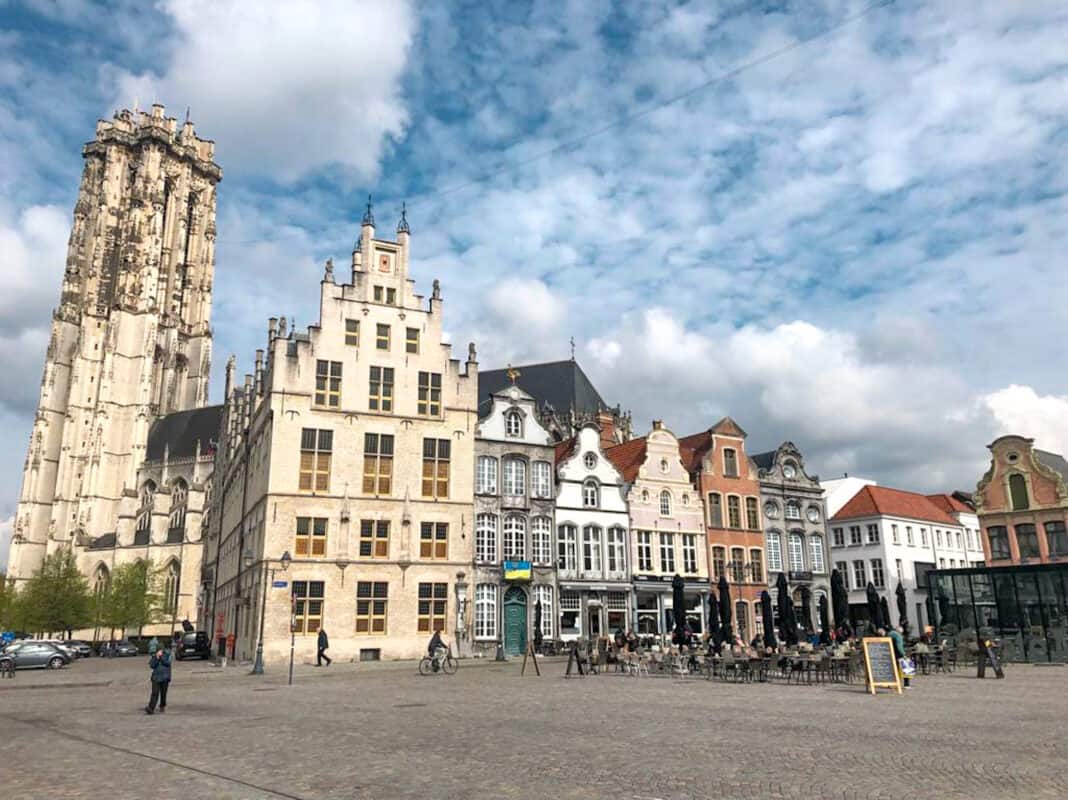
As squares go, this is a pretty impressive one. Standing outside the entrance to the Town Hall looking out across it, you have an incredible image in front of you of St Rumbold Cathedral’s belfry towering over a row of attractive Flemish buildings.
From the cathedral side, looking over to the Town Hall, you are awarded equally impressive views.
The Town Hall
If Mechelen didn’t have such an impressive cathedral and tower, the main draw on the central square would arguably be its fantastic Town Hall.
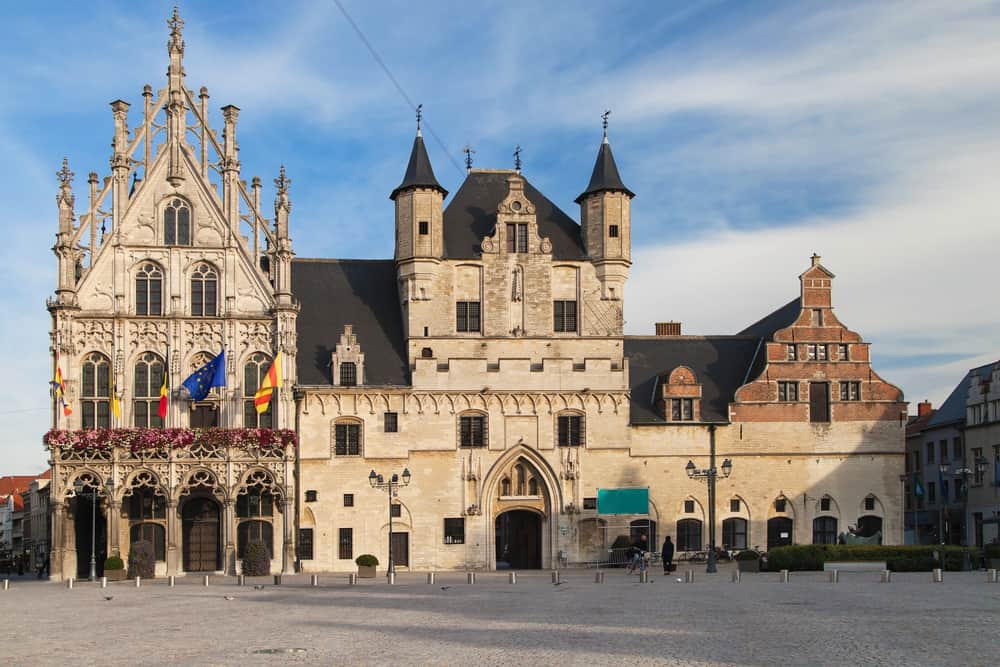
This impressive piece of architecture once housed a cloth hall during the 1300s. It contains a belfry in the central part of the building. However, this was never completed due to the fact that they ran out of money back in the 14th century.
It is one of two belfries in Mechelen – the other is St Rumbold’s Tower – and both have been awarded UNESCO World Heritage status.
The left part of the Town Hall is the Palace of the Great Council. You can’t miss this beautiful building. Intended to be a meeting place for this body, it apparently never got to serve that function.
The Opsingjoorke
For the eagle-eyed, look out for the intriguing sculpture to the right of the Town Hall called the Opsingjoorke. It looks like a bouncing man on a large rug.
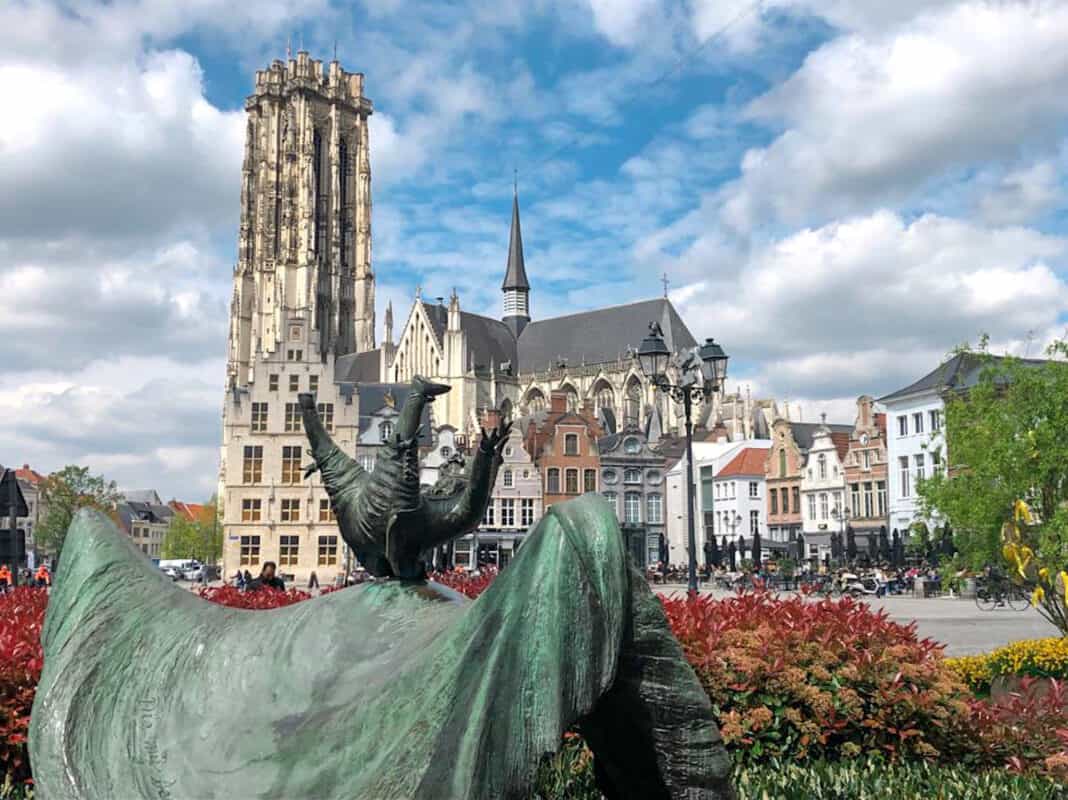
According to Visit Mechelen, this bronze statue is a reference to drunken husbands who mistreated their wives. Whenever the city has a parade, they carry a doll depicting these ‘Sotscops’ (‘Foul Bridegrooms’), which are flung up into the air in a large cloth.
The Statue of Margaret of Austria and the Alderman’s building
On the opposite side of the square, to the cathedral’s left, you’ll find the statue of Margaret of Austria.
Margaret was the Governor of Habsburg in the Netherlands and guardian of future Holy Roman Emperor Charles V during the early 16th century. She died in the city in 1530.
Behind her statue is the Alderman’s building (Schenpenhuis in Flemish), reportedly the first town hall in Flanders that was built with stone.
It has a remarkably long history of acting as an important meeting place over the centuries, including for the municipal court of justice, the Great Council, and more recently, as a city archive and library. Today it houses the tourist office.
Go into St Rumbold’s Cathedral and take in the views from the top

As mentioned earlier, St. Rumbold’s Cathedral is arguably the top attraction in Mechelen and is hard to miss on a visit here.
It is free to go inside and definitely worth taking the time to explore inside. However, I’d recommend doing this once you’ve climbed up and returned from the Skywalk at the top of St Rumbold’s Tower.
Constructed in the 1200s, this huge cavernous religious landmark was later known as the ‘the church of the archbishops’. Highlights to see are the stunning high altar dating from the 1660s and the painting of ‘Christ on the Cross’ by Anthony van Dyck.
Climbing the tower
Standing at just over 97m, St Rumbold’s Tower is a UNESCO World Heritage Site. Although the original plans were for it to reach 167m, it remains one of Belgium’s tallest Gothic Cathedrals.
The visitor’s guide and information panels in the tower provide some fascinating facts about this impressive structure. Operated by an electric motor fitted in 1860, the clock displayed the precise, accurate time. Thanks to its visibility from pretty much everywhere in the city, Mechelen’s inhabitants could be confident that everyone knew the right time.
Note that to get to the top of the tower, you will have to climb 538 steps (there is unfortunately no lift, so it’s not one for anyone with mobility issues).
Fortunately, for those who don’t like heights, you climb up the inside of the tower. It’s only when you get to the metal skywalk that you are outside and get a sense of how high up you are.
Even then, the walkway is slightly set back from the tower ramparts so you can get some great panoramic views without getting too close to the edge.
Once you’ve made the climb, I’m sure you’ll decide it was worth it. There are spectacular views over the city itself and you can even see as far as Antwerp and Brussels.
The Visitor’s Guide to St Rumbold’s Tower, which you can pick up when you purchase tickets, has pictures of the four directions from the top and marks out landmarks to look out for.
The tower is open daily from 1 pm to 6 pm except Saturdays when it is open from 10 am to 6 pm. Last admission is 5 pm.
Explore the Beguinages
There are two Beguinages (or Begijnhofs) in Mechelen. Both are within close walking distance from each other and are located to the north west of the cathedral.
These self-sufficient communities that rose up inside northern European towns have a distinct character.
The buildings and houses date back to the Middle Ages and were populated by widows who had lost their husbands during the Crusades. Rather than live in a convent, the widows banded together and created these remarkable and sustainable housing projects.
The smallest of the two – the Small Beguinage (Klein Begijnhof) – dates from the 13th century and was the first to be built in the city. Attractive as this is, it is not big at all, and you should spend most of your time exploring its larger counterpart, which has been awarded UNESCO World Heritage status.
Built a few centuries later, in the late 1500s, the Large Beguinage (Groot Begijnhof) has a real village (inside a city) feel and is very calming.
There are some really pretty parts to this area – narrow cobbled streets, period street lights, and attractive houses – particularly around the Cellites’ Monastery.
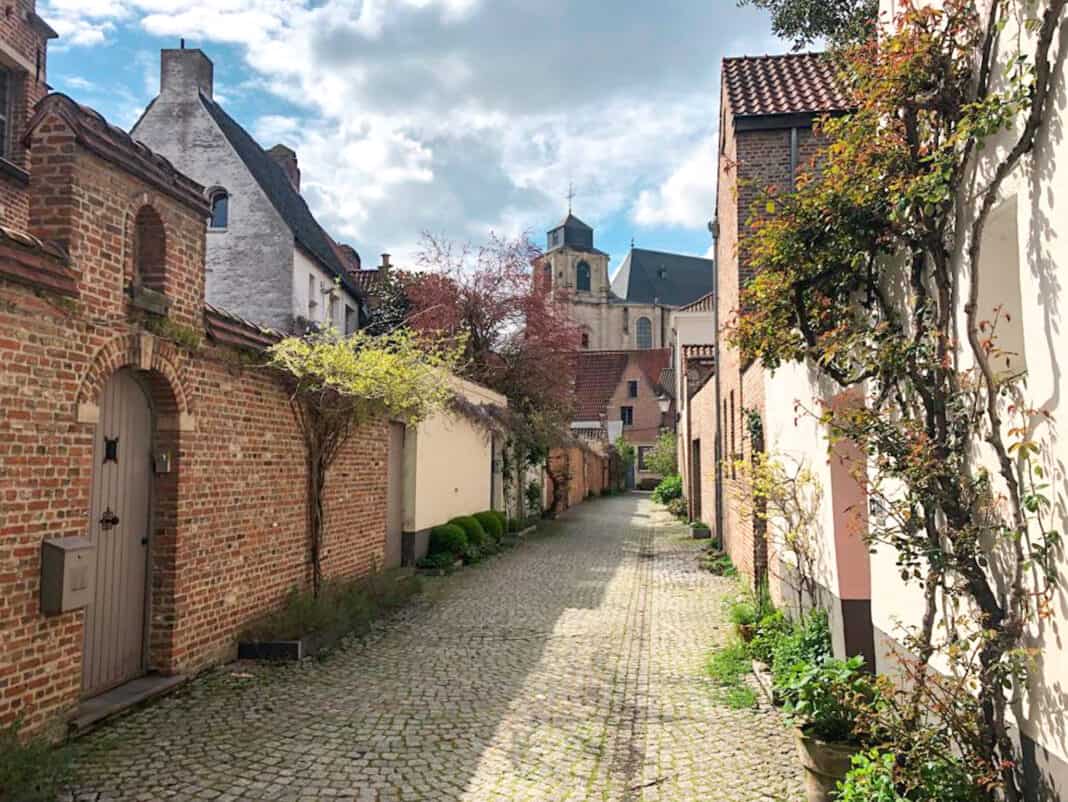

The street leading up to the Het Anker Brewery is also quite striking.
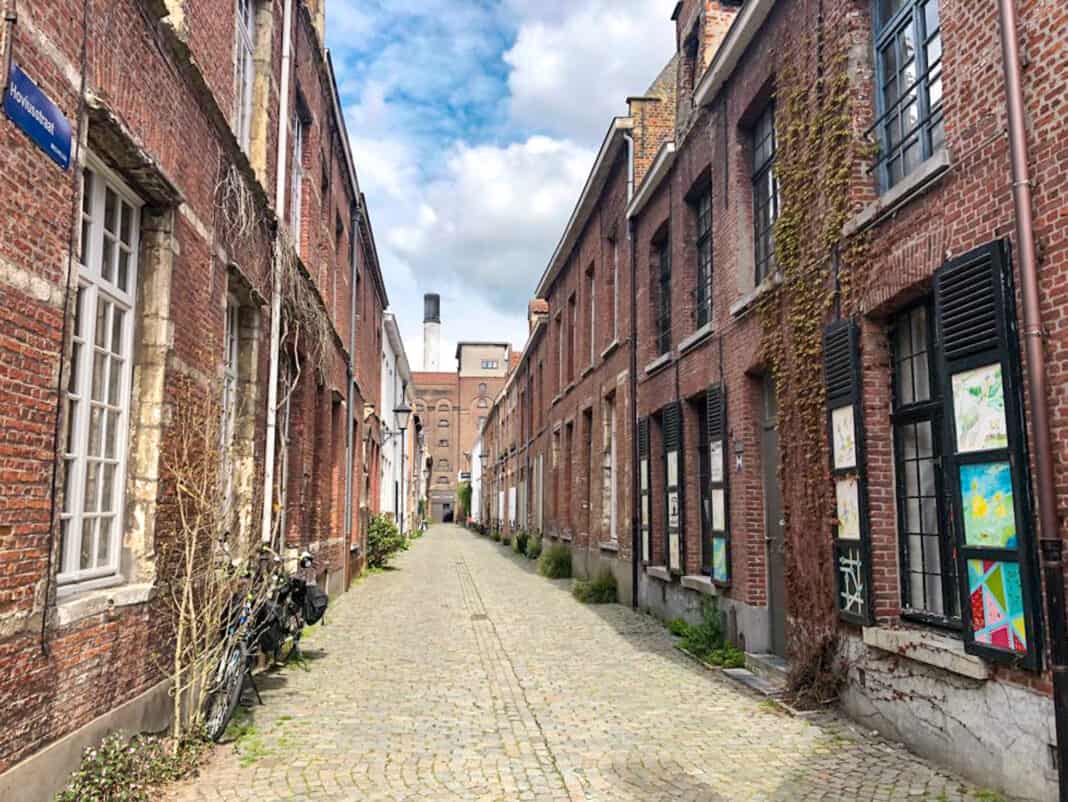
Mechelen is not alone in featuring Beguinages. If you want to explore one even larger than the ones here, you only have to take a 30-minute train journey to Leuven.
Wander around Haverwerf
Haverwerf is a small attractive area in Mechelen on the south bank of the Inner Dyle (this is part of the River Dyle that flows through the centre of the city rather than the Outer Dyle that flows around the north.)
In the past, boats carrying oats used to be transported to Haverwerf where they were unloaded and sold.
See the Beethoven Statute
If you are walking to the Haverwerf area, you may come via the Large Bridge (Grootbrug in Flemish). If this is the case, you’ll pass the small Beethoven statue.
The statue was erected in 2020 to mark the 250th anniversary of the composer’s birth (although he apparently never visited the city, his grandparents lived here).
Look over at St Joseph, the Little Devils, and Little Paradise
Haverwerf is, however, most famous for the three beautiful houses close to the small bridge that connects the river’s two banks, and which stand out from the other buildings.
Standing in a row, these distinctive houses are (from left to right), St Joseph (Sint-Jozef), the Little Devils (De Duiveltjes), and Little Paradise (Het Paradijske).
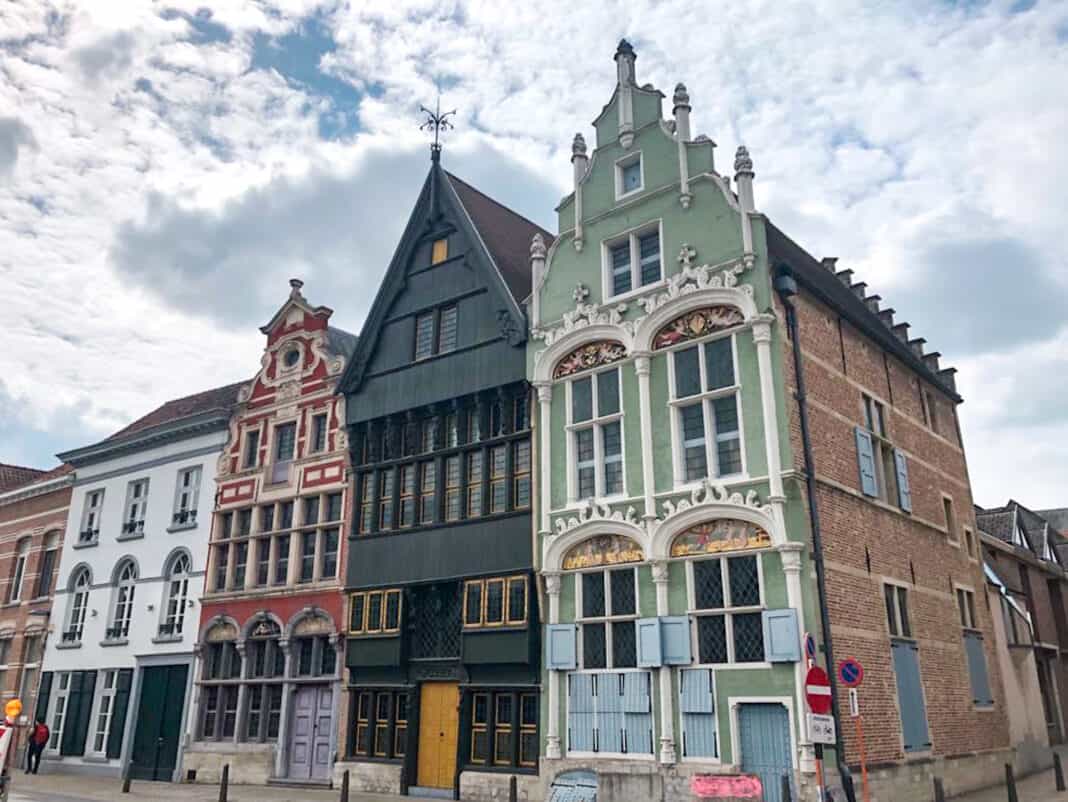
All three date from the 16th and 17th century and are all different in design. The most well-known arguably is the Little Devils (because of the devils acting as the pillars), which features a striking wooden façade. Originally called the Prodigal Son, if you look closely you can see the story set out above the building’s front door.
Visit the palaces of the two Margarets
Several landmarks are literally a stone’s throw from Mechelen’s bus station.
The Palace of Margaret of Austria
Top of the list is the Palace of Margaret of Austria (the Court of Savoy or Hof van Savoye Palace). Margaret of Austria was the regent of the Habsburg Netherlands between 1507 and 1530, and this was her residential home.
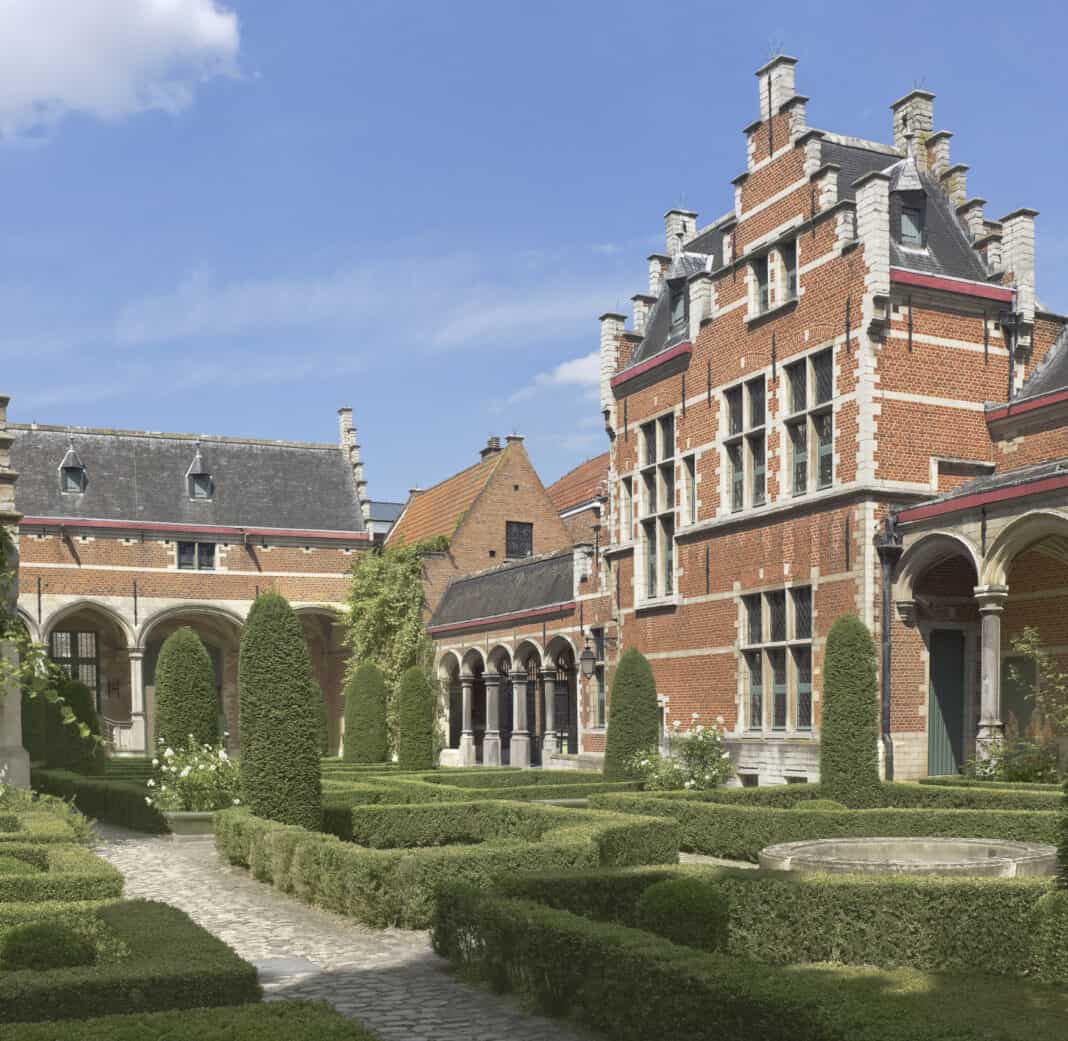
It was also from here where she kept an eye on her nephew – the future Holy Roman Emperor Charles V – who spent much of his childhood growing up in the building across the street (the remains of the Palace of Margaret of York).
The Palace of Margaret of Austria was the Low Countries’ first renaissance building and has a colourful history. From the early 1600s to the late 1700s, the Great Council was located in the palace.
The main attraction here is the stunning garden at the rear, which, unfortunately is the only part of the palace that the public can access. It is open every day except public holidays (although closed for an hour over lunchtime on week days).
The Palace of Margaret of York
Across the street, you’ll also find the aforementioned Palace of Margaret of York. This is where Margaret (not to be confused with Margaret of Austria), the widow of Charles the Bold, also lived.
It is now a theatre.
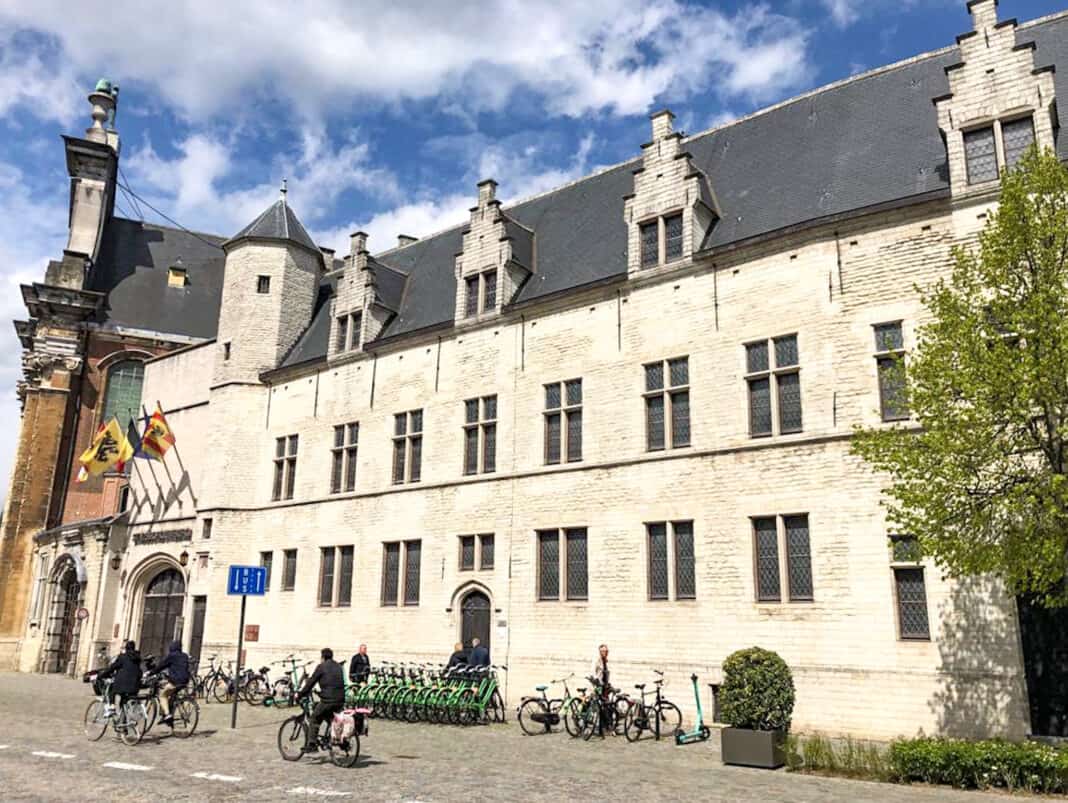
Learn about Mechelen’s war history at the Kazerne Dossin
During World War 2 Belgium was occupied by Nazi Germany. The site in Mechelen where the Kazerne Dossin Museum building stands was used as a transit and nazi concentration camp to imprison over 25,000 Jews and 353 Roma.
I fully intended to visit this museum but found it is closed on Wednesdays. If you can enter, the museum explores what happened to Belgium’s Jews, the persecution of different groups, and the subject of human rights.
There is also a lone railway carriage standing outside. This is a sobering reminder of what happened here. Every one of the prisoners was deported by train to Auschwitz-Birkenau and a certain death.
From Mechelen Nekkerspoel Station, you can reach the museum on foot in just 15 minutes. It is open daily from 9 am to 5 pm except Wednesdays.
Eat good food at De Vleeshalle
If you are looking for a slightly different, albeit atmospheric, dining experience, then grab something to eat and drink at the unique food market known as De Vleeshalle. The market is housed in a smart 19th century brick building.
The large spacious hall serves food on the ground floor. On the two floors above, you’ll find interior architects, a wax bar, boutiques, and offices. It’s worth walking up to the first floor for great photos across the food hall.
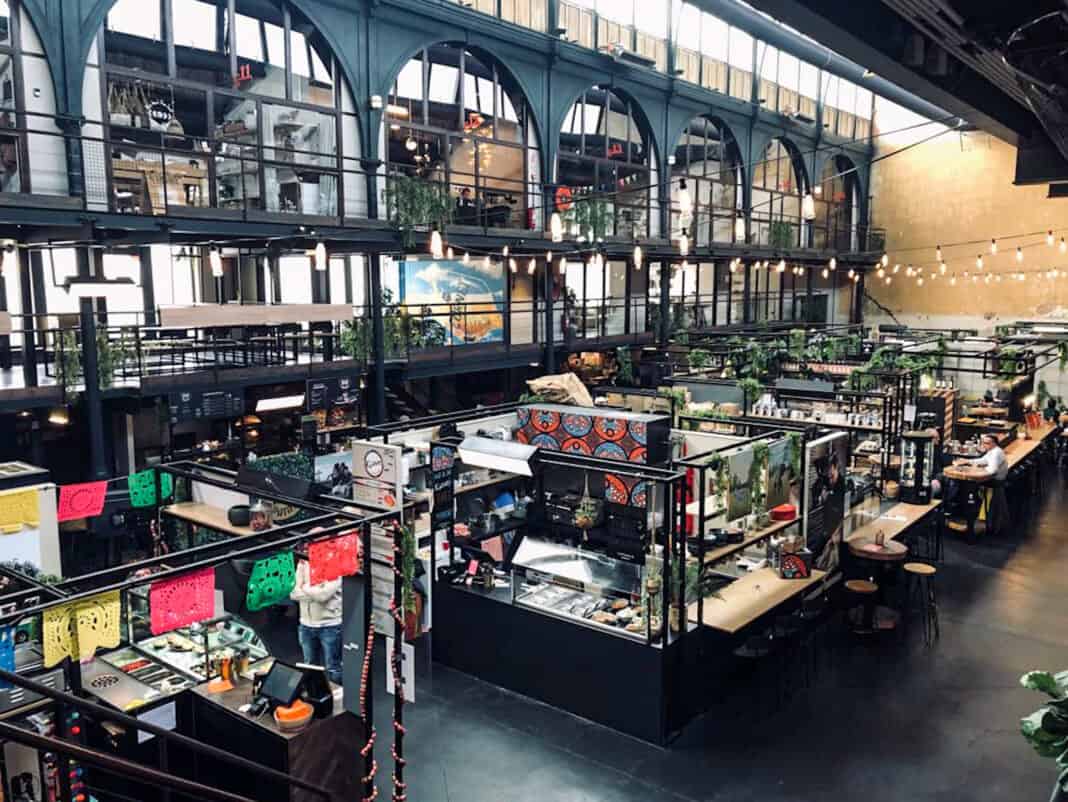
You don’t have to make a reservation. Simply turn up and look around the different food counters which specialise in different cuisines and hearty (and healthy) food options.
Stroll through the botanical garden
Mechelen features quite a few green spaces, but some of the main attractions – Vrijbroek Park and Winter Garden of the Ursuline Nuns – are a little way out of the city centre.
If you’re only in Mechelen for a day, you may not, therefore, find it possible to include these on your itinerary. However, the botanical garden (Kruidtuin), which runs along the north bank of the Inner Dyle, is very easy to get to from the centre.
You can reach the garden via the towpath beside the river (see below). However, if you decide to grab something from the covered food market (De Vleesshalle), it’s only a short walk down to the botanical garden’s entrance.
The garden covers quite an extensive area and is a relaxing environment to chill out in. There’s also a playground for kids.
While you are here, you’ll no doubt spot the fantastic domed church on the south bank of the Dyle that overlooks the botanic garden. This is the Church of Our Lady of Hanswijk.
Be dazzled by the stunning cupola at The Winter Garden
Although you might be hard pushed to visit the Winter Garden on a day trip to Mechelen, if you’re here for a bit longer, it’s worth considering visiting.
Known as The Winter Garden of the Ursuline Nuns (or Wintertuin van de Ursulinen), this beautiful Art Nouveau design (with other architecture styles thrown in) is about 10 km east of Mechelen.
Nuns at the Ursuline Institute of Onze-Lieve-Vrouw-Waver established school buildings and cloisters in 1840 and added the winter garden 60 years later. This architecture is topped off with a dazzling, eye-catching, multi-coloured stained glass cupola that depicts animals and plants. These stand guard over a collection of plants that include ferns and flowers.
Visitors, however, should note that you cannot visit the gardens currently as restoration and renovation is being undertaken (it is due to reopen in September 2023).
You can reach the garden by bus from the Central Station. Buses 510 and 511 both take you to the church of OLV-Waver where you get out, and it’s then a short walk to the site’s entrance.
Take a boat trip on the Dyle River
Although Mechelen’s waterway is nowhere near as scenic as those found in Ghent and Bruges, on a warm sunny day, I would recommend a short boat trip if this interests you.
You can learn more about boat trips on the Inner Dyle, which runs through the city centre, from Mechelen’s official website.
Stroll along the Dyle Path
As I noted earlier, Mechelen is a very walkable city, and one of the main attractions, particularly on a warm, sunny day, is to follow the Dyle Path. This is a towpath that runs alongside the Inner Dyle.
One section, which runs from Haverwerf to the botanical garden, floats on the water, and you get great views of the old houses on your way.
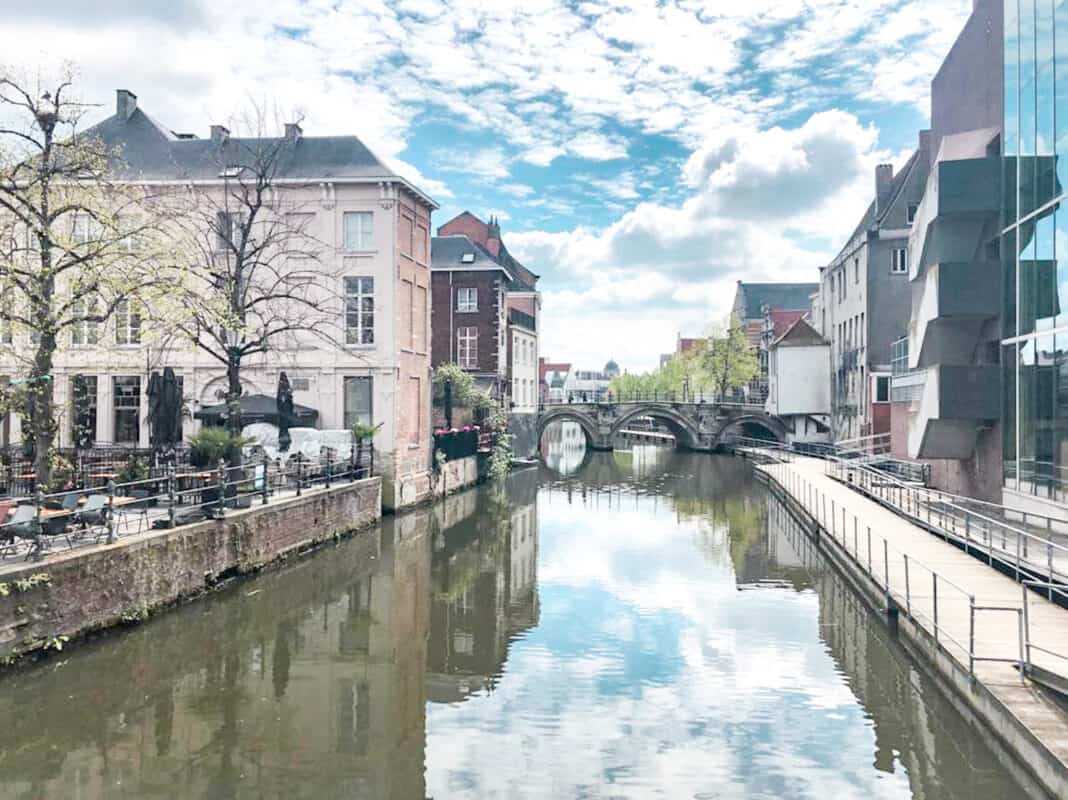
Soak up the vibe at Vismarkt
As you stand in this relatively small area on the north bank of the Dyle River, you may be surprised to learn that Vismarkt was once the site of Mechelen’s fish market. Whereas fish was first traded on this spot in the 1530s, today you’ll find a smattering of funky bars and eateries.
It’s a great place to stop if you need a break from sightseeing. I stopped off at a great café for a coffee overlooking the river called the Golden Fish (De Gouden Vis), but there are quite a few spots to stop for refreshments here.
Learn about Dutch beer at the Het Anker brewery
Het Anker Brewery, right on the edge of the Large Beguinage (Groot Begijnhof), is a top brewery in Belgium. It is also one of the country’s oldest, dating back to the 15th century.
I literally stumbled across it by accident while exploring this fascinating area. At a distance, the imposing large brick building at the end of a picturesque street lined with terrace houses looked like a disused factory (it was once the beguinage’s hospital).
Curiosity, however, prompted me to walk up to the gates, where I discovered that the brewery offers daily tours. Had it not been so early in the day I would have been very tempted to go in, and will definitely do this when I go back.
The brewery offers weekly guided tours, and you are advised to book ahead. For a 9 euro entrance fee, you get two beers. For more information, visit the website.
This is one for beer lovers, and you won’t be disappointed. I say this because I deliberately tried a few of the beers that are brewed here later on before dinner.
The best known, arguably, is the Gouden Carolus beer range (the Gouden Carolus Classic won the gold medal in the 2012 World Beer Awards). Another top one is Maneblusser.
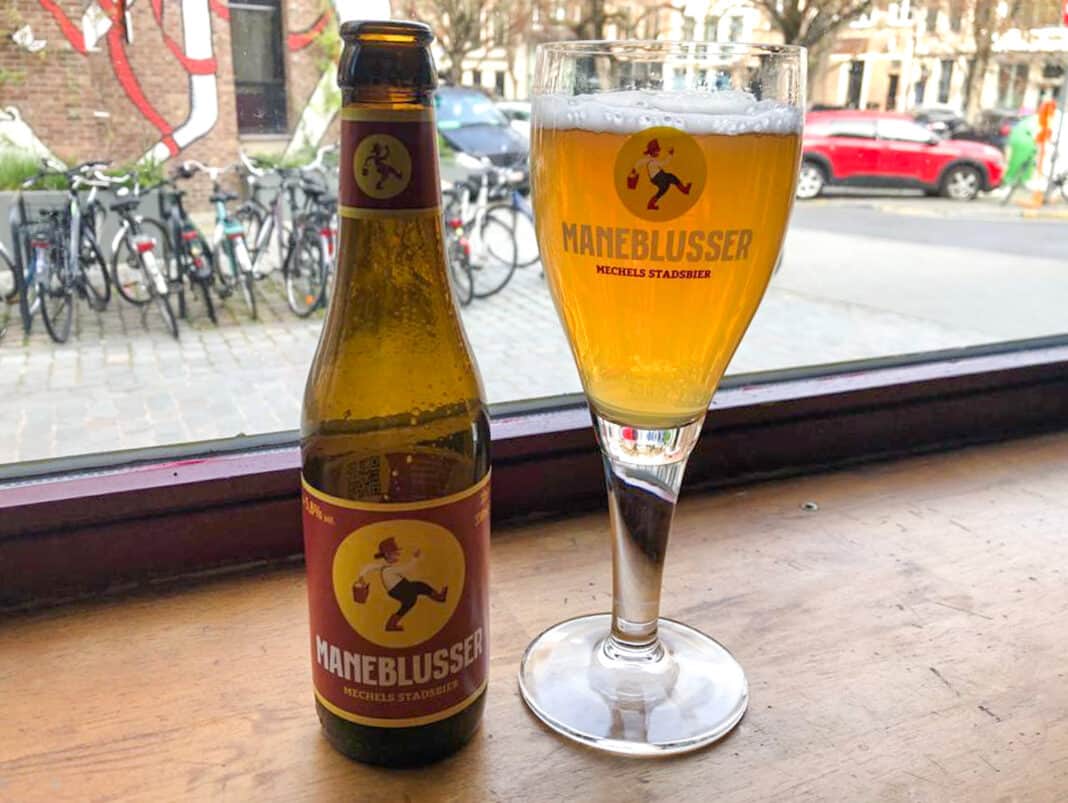
Smell the roses at Vrijbroek Park
One of Mechelen’s top green spaces, the large Vrijbroek Park features a beautiful rose garden. It’s another top place to visit in the city.
Like the Winter Garden of the Ursuline Nuns, it is outside of the city centre, but not as far – it’s about 2 km walk west from the Brusselpoort (the city gate).
If you have time while in Mechelen, the park would be a perfect place to get some fresh air, especially on sunny days and when the roses are in full bloom. There is a brasserie inside the park, and you can cycle and walk along the paths.
Visit one of Mechelen’s museums and galleries
For its relatively small size, Mechelen has a great variety of museums. As well as Kazerne Dossin, one of the best ones to visit is the Museum Hof van Busleyden, a short walk north of the main square.
Thanks to the influence of Holy Roman Emperor Charles V and his aunt Princess Margaret of Austria, Mechelen’s status rose in the 1500s. In this palace, you can learn more about this fascinating period in the city’s history.
It’s not very far from St Rumbold’s Cathedral so it would be easy to visit on a short trip.
Het Kunstuur, an art museum, is also located near to the cathedral, and there are several art galleries in the city.
There is also a toy museum (Speelgoedmuseum). This is outside the ring road and slightly east of Mechelen’s second train station, Mechelen Nekkerspoel.
Alternatively, if you want something techier, there is the aptly named Technopolis, an interactive science museum. The museum is about 3 km from Mechelen’s main Central train station.
And for those with time on their hands (pardon the pun), there is also a watchmaker’s museum near the north side of the Large Bridge.
Day trips to nearby places
As Mechelen is so well connected to other nearby places of interest, you could base yourself here and do day trips to Brussels, Antwerp, and Leuven. All of these are within easy reach by train.
If you fancy a day out in the capital, see my recent post on one day in Brussels. I also plan to publish a post on things to do in nearby Leuven in the next few weeks – so come back if this interests you.
Things to do in Mechelen Belgium in one day: my suggested walking tour
There is a lot to do in Mechelen, so you’ll need to be selective if you only have one day here.
Sign up here for my suggestions for the best places worth seeing as part of your sightseeing itinerary (start early if you want to pack it all in!).
Other top sights I’ve covered above and in the surrounding area can either be substituted into this or visited on subsequent days if you have longer in the city.
Other European short breaks
My website has a range of posts on other places to visit in Europe for a short break or day trip. You may be interested in the following:
Written by Nick Warburton and Emma Marshall


